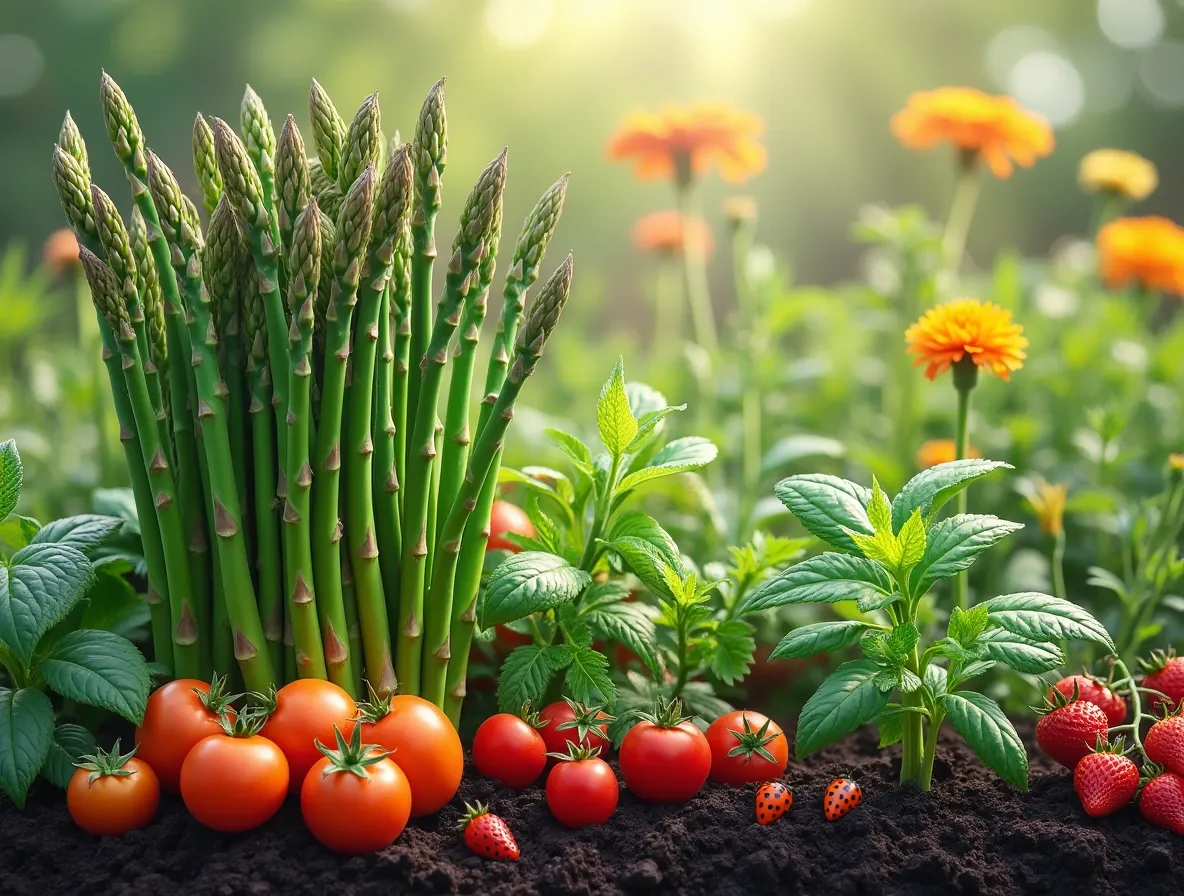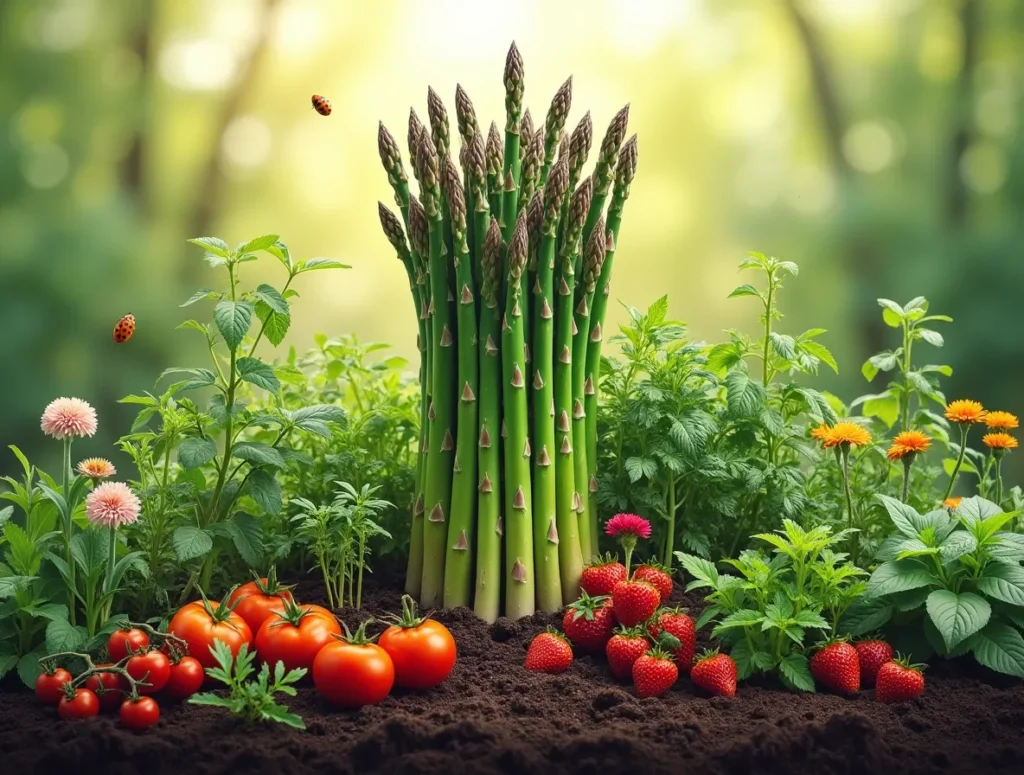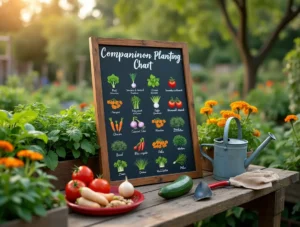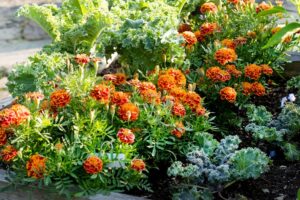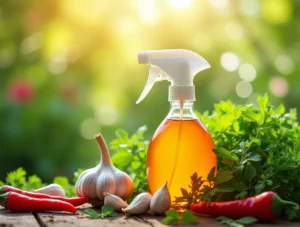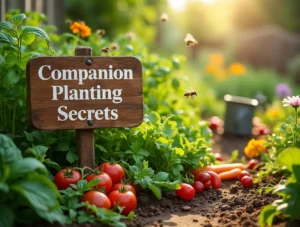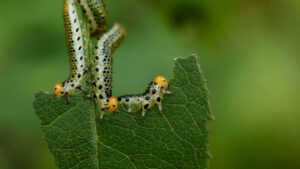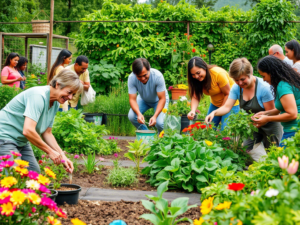Asparagus companion plants are the secret to creating a thriving, productive garden. Asparagus is a beloved perennial vegetable that rewards gardeners with tender, flavorful spears year after year. However, growing asparagus isn’t just about planting it and waiting for the harvest—it’s about building a balanced ecosystem. By strategically pairing asparagus companion plants, you can boost growth, protect against pests, and even enhance flavor.
Companion planting is more than just a gardening trend; it’s a time-tested technique that maximizes the potential of your garden space. The right asparagus companion plants can deter harmful insects, improve soil health, suppress weeds, and make your asparagus taste better. Whether you’re a seasoned gardener or just starting out, understanding which plants grow well with asparagus can transform your garden into a productive, pest-free haven.
In this guide, we’ll explore the best asparagus companion plants, from herbs and vegetables to flowers and fruits. You’ll also learn which plants to avoid and get practical tips for creating a harmonious garden layout. By the end, you’ll be ready to pair your asparagus with the perfect companions and enjoy a bountiful harvest for years to come. Let’s dig in!
On This Page
Why Asparagus Companion Plants Are Important for a Thriving Garden
Companion planting is more than just a clever way to organize your garden—it’s a natural, sustainable approach to gardening that benefits both your plants and the environment. When it comes to asparagus, companion planting is especially valuable because asparagus is a long-lived perennial that occupies garden space for many years. By choosing the right companions, you can make the most of that space while keeping your asparagus healthy and productive.
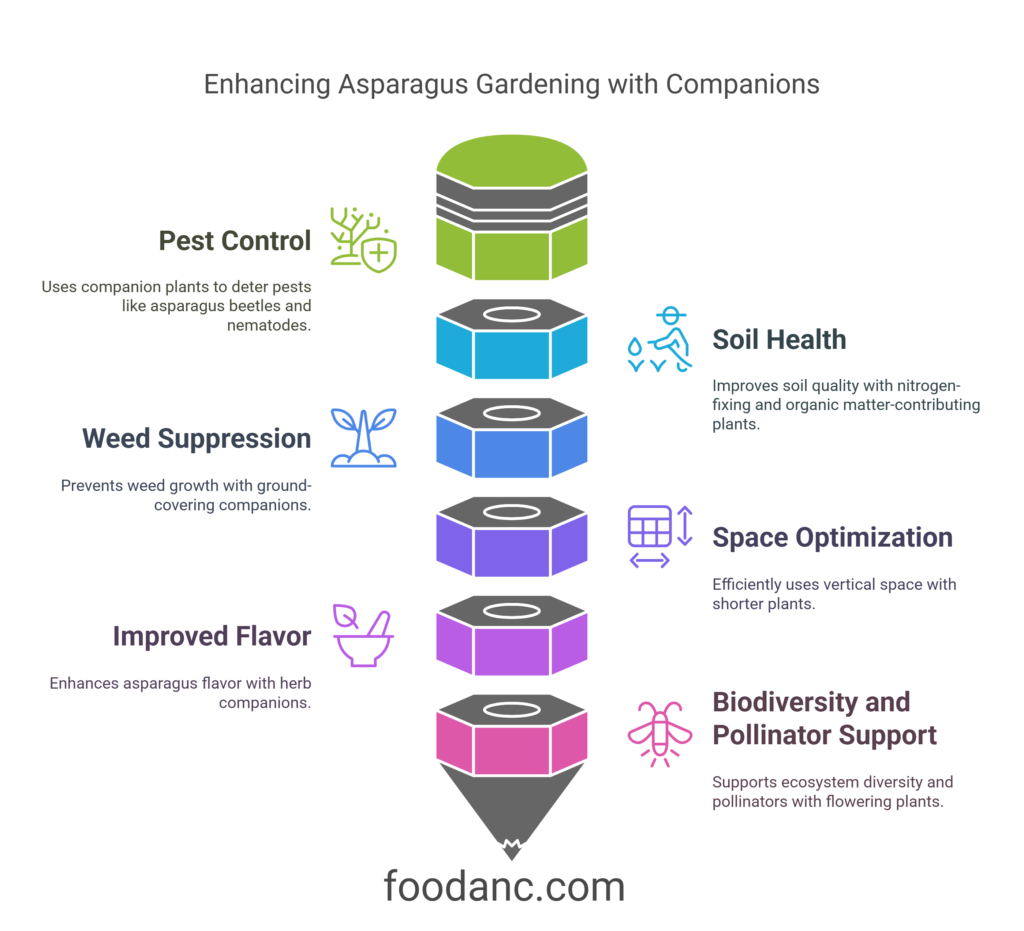
1. Pest Control
Asparagus is susceptible to pests like asparagus beetles and nematodes, which can damage the plants and reduce yields. Companion plants like tomatoes, basil, and marigolds naturally repel these pests, reducing the need for chemical pesticides. For example, tomatoes emit solanine, a chemical that deters asparagus beetles, while marigolds release compounds that repel nematodes.
2. Soil Health
Asparagus thrives in nutrient-rich soil, and certain companion plants can help maintain or even improve soil quality. Plants like peas and beans (though beans should be avoided) are nitrogen-fixers, meaning they add nitrogen to the soil, which asparagus loves. Herbs like parsley and comfrey also contribute to soil health by adding organic matter and improving microbial activity.
3. Weed Suppression
Weeds can compete with asparagus for nutrients and water, but low-growing companion plants like strawberries and nasturtiums act as natural ground covers, shading the soil and preventing weeds from taking over. This not only saves you time on weeding but also helps retain soil moisture.
4. Space Optimization
Asparagus plants can grow quite tall, leaving plenty of space below for shorter plants. By planting companions like lettuce, spinach, or cilantro, you can make use of this vertical space without competing with the asparagus roots. This is especially useful in smaller gardens where space is at a premium.
5. Improved Flavor
Believe it or not, some companion plants can actually enhance the flavor of your asparagus. Herbs like parsley and basil not only repel pests but also contribute to a more robust, flavorful harvest. It’s a win-win for your garden and your taste buds!
6. Biodiversity and Pollinator Support
Companion planting encourages biodiversity by attracting beneficial insects like ladybugs, lacewings, and pollinators. Flowers such as marigolds and nasturtiums add beauty to your garden while supporting a healthy ecosystem.
Best Companion Plants for Asparagus
Choosing the right companion plants for asparagus can make a world of difference in your garden. The best companions not only coexist peacefully with asparagus but also provide additional benefits like pest control, soil enrichment, and weed suppression. Here’s a breakdown of the top companion plants for asparagus, categorized by herbs, vegetables, flowers, and fruits:
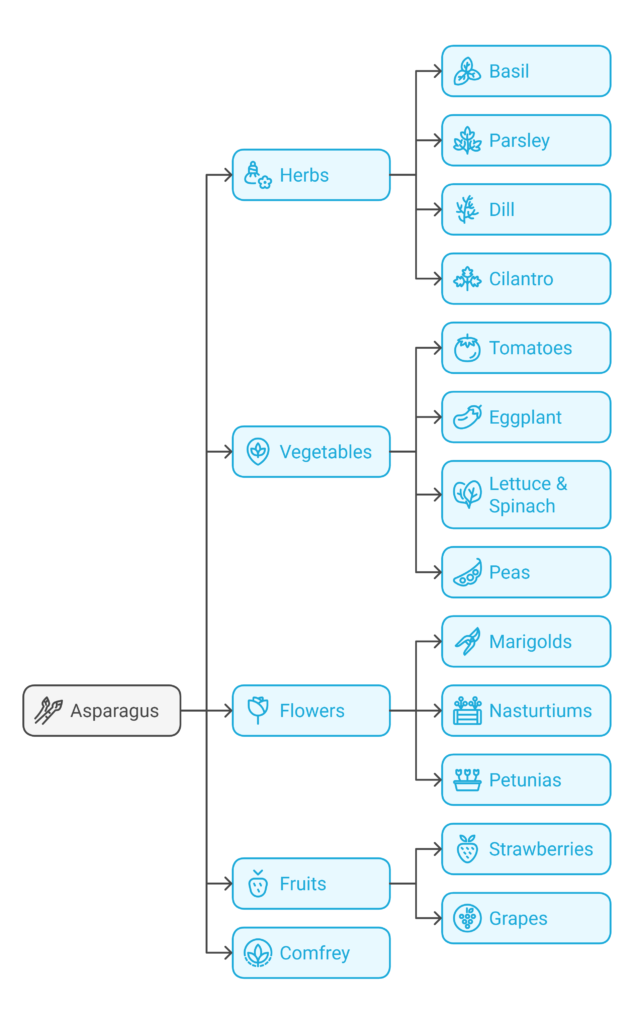
1. Herbs
Herbs are some of the best companions for asparagus because they often repel pests, improve soil health, and enhance flavor without competing for space.
- Basil:
Basil is a superstar companion for asparagus. Its strong scent deters pests like aphids and asparagus beetles, while its small size ensures it won’t overshadow your asparagus. Plus, basil thrives in the partial shade provided by taller asparagus plants. - Parsley:
Parsley is a nitrogen-rich herb that improves soil health and enhances the flavor of asparagus. It also attracts beneficial insects like hoverflies, which prey on harmful pests. - Dill:
Dill attracts beneficial insects such as ladybugs and lacewings, which feed on asparagus pests like aphids. Its delicate foliage and shallow roots make it a great companion that won’t compete with asparagus for nutrients. - Cilantro:
Cilantro’s shallow root system and low growth habit make it an ideal companion for asparagus. Its flowers attract pollinators and beneficial insects, helping to keep your garden ecosystem balanced.
2. Vegetables
Certain vegetables pair exceptionally well with asparagus, creating a symbiotic relationship that benefits both plants.
- Tomatoes:
Tomatoes and asparagus are a classic pairing. Tomatoes repel asparagus beetles, while asparagus releases chemicals into the soil that deter nematodes, which can harm tomatoes. Plant tomatoes alongside asparagus for a mutually beneficial relationship. - Eggplant:
Like tomatoes, eggplants are part of the nightshade family and share a similar symbiotic relationship with asparagus. They help repel pests while benefiting from the nematode-repelling properties of asparagus. - Lettuce & Spinach:
These cool-season crops thrive in the shade provided by tall asparagus fronds. Their shallow roots don’t compete with asparagus, and they act as a living mulch, helping to retain soil moisture and suppress weeds. - Peas:
Peas are excellent companions for asparagus because they fix nitrogen in the soil, which asparagus loves. Their vining habit also helps cover the soil, reducing weed growth and conserving moisture.
3. Flowers
Flowers aren’t just pretty—they’re powerful allies in the garden, especially when it comes to pest control and attracting pollinators.
- Marigolds:
Marigolds are a must-have for any asparagus bed. Their bright blooms repel nematodes, aphids, and other pests, while their roots release compounds that improve soil health. - Nasturtiums:
Nasturtiums act as a trap crop, luring pests away from asparagus. Their vibrant flowers also attract pollinators, and their sprawling growth habit helps suppress weeds. - Petunias:
Petunias are another member of the nightshade family that repels asparagus beetles. Their colorful blooms add beauty to your garden while protecting your asparagus.
4. Fruits
Some fruits make surprisingly good companions for asparagus, especially when it comes to sharing space and resources.
- Strawberries:
Strawberries and asparagus are a match made in gardening heaven. Both are perennials with different root zones, so they don’t compete for nutrients. Strawberries also provide ground cover, helping to retain soil moisture and suppress weeds. - Grapes:
Grapes grow vertically on trellises, making them an excellent companion for asparagus. They don’t compete for space, and both plants can thrive together in a permanent garden bed.
5. Other Beneficial Plants
- Comfrey:
Comfrey is a dynamic accumulator, meaning it draws nutrients from deep in the soil and makes them available to nearby plants. Its flowers also attract pollinators, making it a great addition to any asparagus bed.
Why These Plants Work Well with Asparagus
The best companion plants for asparagus share a few key traits:
- They don’t compete for nutrients or space.
- They provide pest control, soil enrichment, or weed suppression.
- They thrive in similar growing conditions (full sun, well-drained soil).
Plants to Avoid Planting with Asparagus
While many plants make excellent companions for asparagus, some can hinder its growth or create competition for resources. To ensure your asparagus thrives, it’s important to know which plants to keep out of your asparagus beds. Here are the main culprits to avoid:
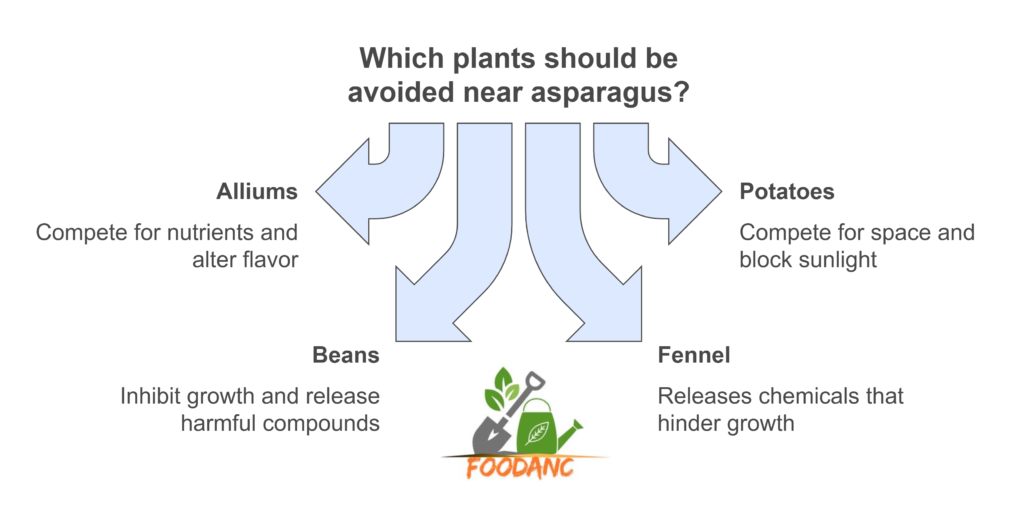
1. Alliums (Garlic, Onions, Chives, Leeks)
- Why to Avoid:
Alliums, such as garlic, onions, and chives, are known to compete with asparagus for nutrients in the soil. They can stunt the growth of asparagus and even alter its flavor. Additionally, the strong scent of alliums may deter beneficial insects that help protect asparagus from pests.
2. Potatoes
- Why to Avoid:
Potatoes and asparagus are a bad match for several reasons. Both plants have deep root systems that compete for space and nutrients. Potatoes also cast shade as they grow, which can block sunlight from reaching your asparagus. Furthermore, potatoes are heavy feeders, which can deplete the soil of nutrients that asparagus needs to thrive.
3. Beans
- Why to Avoid:
While some legumes, like peas, are great companions for asparagus, beans are not. Beans can inhibit the growth of asparagus by competing for nutrients and space. They also release compounds into the soil that may interfere with asparagus root development.
4. Fennel
- Why to Avoid:
Fennel is known to be allelopathic, meaning it releases chemicals into the soil that can inhibit the growth of nearby plants, including asparagus. It’s best to keep fennel far away from your asparagus beds.
5. Other Heavy Feeders
- Why to Avoid:
Plants that require a lot of nutrients, such as corn or squash, can compete with asparagus for resources. Asparagus is a perennial that needs consistent access to nutrients over many years, so planting heavy feeders nearby can weaken your asparagus plants over time.
What Happens If You Plant These Near Asparagus?
- Stunted Growth: Competing for nutrients and space can lead to smaller, less productive asparagus plants.
- Reduced Yield: Asparagus may produce fewer spears if it’s struggling to access the resources it needs.
- Increased Pest Problems: Some plants, like alliums, can deter beneficial insects, leaving asparagus more vulnerable to pests.
- Flavor Alteration: Certain plants, especially alliums, can affect the taste of asparagus, making it less enjoyable.
Tips for Avoiding Incompatible Plants
- Plan Your Garden Layout: Before planting, map out your garden to ensure incompatible plants are kept far apart.
- Rotate Crops: If you’ve grown potatoes or alliums in a bed, avoid planting asparagus there for at least a few years to prevent nutrient depletion and soil-borne diseases.
- Use Barriers: If you must grow incompatible plants nearby, consider using physical barriers (like raised beds or containers) to separate them.
Tips for Successful Companion Planting with Asparagus
Companion planting with asparagus can be incredibly rewarding, but it requires careful planning and maintenance to ensure both your asparagus and its companions thrive. Here are some practical tips to help you create a harmonious and productive garden:
1. Timing is Key
- Plant Asparagus First: Asparagus is a perennial that takes 2-3 years to establish before it reaches full productivity. Plant your asparagus crowns first, and then introduce companion plants in the following seasons.
- Seasonal Companions: Choose companion plants that align with the asparagus growing season. For example, cool-season crops like lettuce and spinach can be planted in early spring, while warm-season plants like tomatoes and basil can be added later.
2. Proper Spacing
- Give Asparagus Room: Asparagus plants need space to spread their roots and grow tall. Plant asparagus crowns about 12-18 inches apart to allow for healthy growth.
- Avoid Overcrowding: While companion plants can fill in gaps, make sure they don’t overcrowd the asparagus. Leave enough space for air circulation and sunlight to reach all plants.
3. Soil Preparation
- Rich, Well-Drained Soil: Asparagus thrives in nutrient-rich, well-drained soil. Before planting, amend the soil with compost or well-rotted manure to provide essential nutrients.
- Mulch for Moisture: Apply a layer of mulch around your asparagus and companion plants to retain soil moisture, regulate temperature, and suppress weeds.
4. Watering Wisely
- Consistent Moisture: Asparagus prefers consistently moist soil, especially during its early growth stages. Water deeply and regularly, but avoid waterlogging the soil.
- Companion Water Needs: Choose companion plants with similar water requirements to simplify your watering routine. For example, basil and parsley both prefer moist but well-drained soil.
5. Pruning and Maintenance
- Remove Dead Foliage: In early spring, cut back any dead asparagus fronds from the previous season to make room for new growth. This also helps prevent disease.
- Prune Companions: Regularly prune or harvest companion plants like basil, parsley, and dill to keep them from overshadowing the asparagus or becoming too invasive.
6. Pest Monitoring
- Check for Pests: Regularly inspect your asparagus and companion plants for signs of pests like asparagus beetles or aphids. Early detection makes it easier to manage infestations.
- Encourage Beneficial Insects: Plant flowers like marigolds and nasturtiums to attract beneficial insects that prey on pests.
7. Fertilizing
- Feed Asparagus Annually: Asparagus is a heavy feeder and benefits from an annual application of balanced fertilizer or compost in early spring.
- Avoid Over-Fertilizing Companions: Be cautious with fertilizers around companion plants, as too much nitrogen can lead to excessive leafy growth at the expense of fruit or flower production.
8. Rotate Crops
- Prevent Soil Depletion: If you’re growing annual companion plants like lettuce or tomatoes, rotate them to different areas of the garden each year to prevent soil nutrient depletion and reduce the risk of disease.
9. Experiment and Adapt
- Try Different Combinations: Every garden is unique, so don’t be afraid to experiment with different companion plants to see what works best in your space.
- Observe and Adjust: Pay attention to how your plants interact and make adjustments as needed. For example, if a companion plant is competing too aggressively, consider replacing it with a more compatible option.
Example Companion Planting Layouts
Here are a few ideas for arranging your asparagus and companion plants:
- Asparagus + Tomatoes + Basil + Parsley:
- Plant asparagus in the center, with tomatoes on one side and basil and parsley on the other. This quartet benefits all plants and maximizes space.
- Asparagus + Strawberries + Nasturtiums:
- Alternate rows of asparagus and strawberries, with nasturtiums planted as a ground cover. This trio provides pest control, weed suppression, and a beautiful garden display.
- Asparagus + Marigolds + Lettuce:
- Plant asparagus in the back of the bed, with marigolds along the edges and lettuce in the front. This layout offers pest deterrence and shade for cool-season crops.
Dear Readers, If you enjoyed this article, please consider reposting the image on Pinterest to help share its value with others. Your support means a lot! Thank you!

Frequently Asked Questions (FAQ)
Companion planting with asparagus can raise a lot of questions, especially if you’re new to the concept. Here are answers to some of the most common questions to help you get started and troubleshoot any issues:
Can I plant asparagus and tomatoes together?
Yes! Tomatoes and asparagus are excellent companions. Tomatoes repel asparagus beetles, while asparagus deters nematodes that can harm tomatoes. Just make sure to space them properly (at least 2 feet apart) to avoid competition for sunlight and nutrients.
What are the best herbs to plant with asparagus?
The best herbs for asparagus include basil, parsley, dill, and cilantro. These herbs repel pests, improve soil health, and enhance the flavor of asparagus without competing for space.
Can I grow asparagus in containers with companion plants?
Yes, but with caution. Asparagus has deep roots and needs plenty of space, so choose a large container. For companions, select plants with shallow roots, like lettuce, spinach, or herbs, and ensure the container has good drainage.
How far apart should I plant asparagus and its companions?
Asparagus plants should be spaced 12-18 inches apart to allow room for growth. Companion plants should be placed far enough away to avoid crowding—typically 6-12 inches from the asparagus, depending on the plant’s size and root system.
Can I plant strawberries with asparagus?
Absolutely! Strawberries and asparagus are a great pairing. Both are perennials with different root zones, so they don’t compete for nutrients. Strawberries also provide ground cover, helping to suppress weeds and retain soil moisture.
What should I avoid planting near asparagus?
Avoid planting alliums (garlic, onions, chives), potatoes, beans, and fennel near asparagus. These plants compete for nutrients, space, or release chemicals that can hinder asparagus growth.
Can I plant peas with asparagus?
Yes! Peas are excellent companions for asparagus. They fix nitrogen in the soil, which asparagus loves, and their vining habit helps cover the soil, reducing weed growth and conserving moisture.
How do I protect asparagus from pests without chemicals?
Use companion plants like marigolds, nasturtiums, and basil to naturally repel pests. You can also encourage beneficial insects like ladybugs and lacewings by planting flowers such as dill and cilantro.
When is the best time to plant companion plants with asparagus?
Plant asparagus crowns in early spring, and introduce companion plants once the asparagus is established (usually after the first year). Cool-season companions like lettuce and spinach can be planted in early spring, while warm-season plants like tomatoes and basil can be added later.
Can I grow carrots and asparagus together?
Yes, but with proper spacing. Carrots and asparagus both have deep roots, so plant them at least 12-18 inches apart to avoid root competition. Some gardeners have successfully grown them together by ensuring adequate space and soil preparation.
How long does it take for asparagus to establish before adding companions?
Asparagus takes 2-3 years to establish before it reaches full productivity. During this time, focus on building healthy soil and avoiding heavy feeders as companions. Once established, you can introduce a wider variety of companion plants.
Can I plant flowers like marigolds and nasturtiums with asparagus?
Yes! Flowers like marigolds and nasturtiums are excellent companions for asparagus. They repel pests, attract beneficial insects, and add beauty to your garden. Plant them around the edges of your asparagus bed for maximum benefit.
What should I do if my companion plants are competing with asparagus?
If you notice competition for space, nutrients, or sunlight, consider pruning the companion plants or relocating them to a different area. Always monitor your garden and make adjustments as needed.
Can I plant asparagus and rhubarb together?
Yes! Asparagus and rhubarb are compatible because they have different root systems and nutrient needs. Both are perennials, so they can coexist in the same bed for many years.
How do I care for asparagus and its companions during the winter?
In late fall, cut back dead asparagus fronds and remove any dead plant debris from companions. Apply a layer of mulch or compost to protect the soil and provide nutrients for the next growing season.
Conclusion
Companion planting with asparagus is more than just a gardening technique—it’s a way to create a thriving, balanced ecosystem in your garden. By carefully selecting the right companions, you can boost your asparagus harvest, deter pests, improve soil health, and make the most of your garden space. From herbs like basil and parsley to vegetables like tomatoes and lettuce, and even flowers like marigolds and nasturtiums, the possibilities are endless.
Remember, the key to successful companion planting is understanding the needs of your asparagus and its companions. Avoid plants that compete for nutrients or space, such as alliums, potatoes, and beans, and focus on those that offer mutual benefits. With proper planning, spacing, and care, your asparagus bed can become a productive and beautiful part of your garden.
Whether you’re a seasoned gardener or just starting out, companion planting is a sustainable, eco-friendly way to grow healthier, tastier asparagus. So, roll up your sleeves, experiment with different plant combinations, and enjoy the rewards of a well-planned garden. Happy planting!

